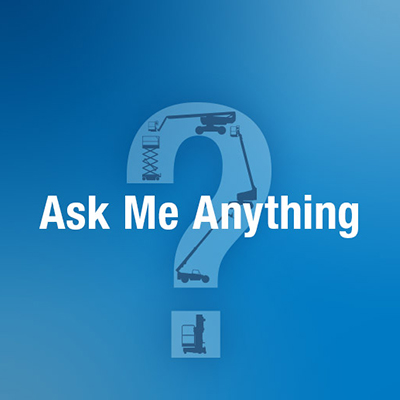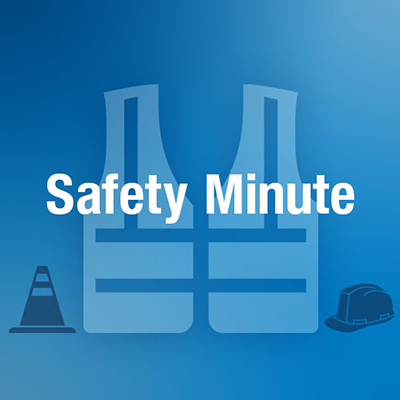Preparing for Platform Load Sense
by Bob Bartley - Sr. Director of Product Support and Service Solutions On Sep 21, 2017, 03:00 AM
Subscribe To Aerial Pros
Filter by tags
Changes to ANSI A92 and CSA B354 standards are coming; we expect to the standards to go into effect in 2020. One of the more significant equipment changes coming from the updated standards will be the addition of platform load sense.
Because Genie® Mobile Elevating Work Platforms (MEWPs), formerly known as aerial work platforms, will soon be manufactured to be in compliance with these standards, it is time to start preparing your business — and your customers — for what’s coming.
 What you need to know
What you need to know
Platform load sense, also known an overload system or load sense system, is being implemented into the current standards. This new provision requires existing worldwide standards. This new provision requires many MEWPs to monitor the weight in the platform and disable functions if the load is above the platform load limit. Essentially, it means that the machine will only allow operators to move and place loads that are within the rated capacity of the platform.
This requirement is similar to provisions in EN280, a European standard in effect since 2001, but it is brand new to the upcoming standards for aerial equipment in North America.
Overloading the platform
Since this may be the first time your employees or your customers have had to think about what happens if the platform is overloaded, here’s a quick summary of what you all need to be aware of: There are two ways to overload a platform: 1) Too much weight in the basket before it leaves the ground, and 2) adding weight to the basket once it is in the air working.
Common culprits of overloading the platform are:
- Platform capacity is not just calculated by the number and weight of people in the basket. It also includes tools like welding equipment, hammers, buckets, etc., and materials such as pipes, panels, signage, windows, etc.
- It also includes operators clothing and personal gear. For example, heavy jackets and boots needed for work in cold-weather conditions all count toward the platform’s total capacity.
- Not calculating the weight of jobsite tools or materials accurately. For example, it is easy to put a bucket with a few tools in the basket and not realize that bucket weighs 50 lb or more.
- Touching part of the building or structure you are working near, such as a beam or window ledge, during operation. The weight added from the structure also counts toward the platform’s load capacity.
Everything contributes to the weight in the platform, which means that everything will be counted in the platform load sense calculations as it compares the platform’s capacity to the machine’s load chart.
What can operators do to prevent overloading the platform? The best way is by understanding the weight of the load being placed in the platform before operating.
Field calibrations recommended
To do calibrations in the field, your technicians will need a digital scale and weights. We recommend steel or plastic barrels filled with water. See the product service manuals for your Genie MEWPs to follow the manufacturer’s recommended calibration procedures for each individual unit.
Once the machine is calibrated for the anticipated platform weight, you can load everything up and get the platform in the air — it’s time to get to work.
Remember: Any weight added to the platform that exceeds capacity after the machine is in operation, will flag the MEWP’s load sense sensor and could trigger the overload alarms.
 When the platform becomes overloaded
When the platform becomes overloaded
With the new platform load sense requirement, MEWPs will be equipped with a sensor, or load sense cell, which has both an audible and visual alarm to alert the operator that the platform has been loaded above the machine’s load limit capacity.
On Genie MEWPs, when the platform is overloaded a load sense recovery feature, built into the platform load sense technology, will allow operators to return safely to the ground through limited functionality allowed, from either the platform or ground control station. Please note: Drive and steer functions are not allowed during recovery.
As soon as operators are safely on the ground, they must remove weight from the platform until the overload warnings, audio and visual, turn off before returning to work.
Please proactively educate your employees and customers about what this alarm means, as well as train them on the safe operating procedures necessary to resolve the situation.
Managing mixed fleets
It is important to know that these updated standards requirements only apply to newly built machines, so there is no need for you to make any changes to your existing fleet.
But as you add new equipment to your fleet, you will need to be ready to answer questions your employees and your customers will have about platform load sense requirements. Particularly, you need to be prepared to communicate how older versus newer versions of equipment models will operate in the field.
Related Posts

ANSI A92 | CSA B354 Ask Me Anything Jan 23rd – 27th
A huge thank you to everyone that participated in the ANSI A29/CSA B354 Ask Me Anything with the Genie Team!
Continue Reading

Genie Safety Minute: Load Sense
Genie Safety Minute is intended to facilitate health and safety discussions on the job site.
Continue Reading

Genie Xtra Capacity™ & Load Sense | Ask Me Anything October 2nd – 6th
A huge thank you to everyone that participated in this Genie Xtra Capacity™ & Load Sense Ask Me Anything with the Genie Team!
Continue Reading


